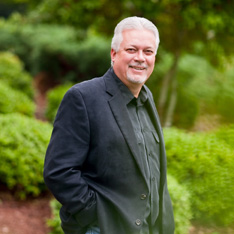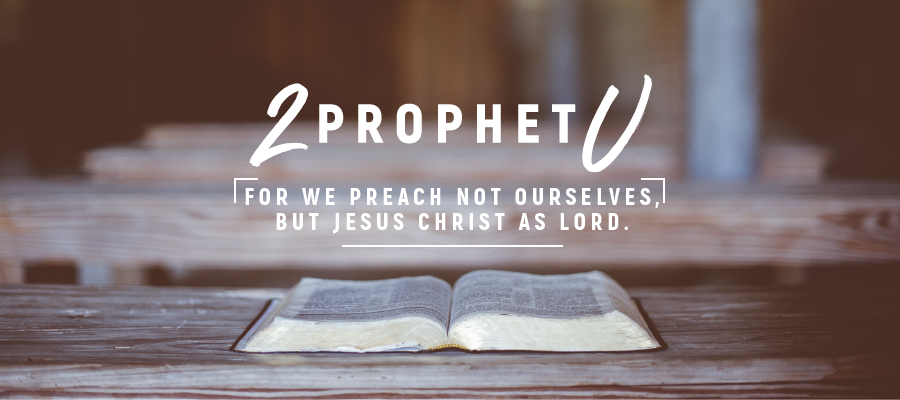God’s Significant Squares of Real Estate
written by: Michael Catt
Several years back, I got an email from my friend, Tom Sanders. I pulled it out the other day and read it again. It stirred my thoughts and hopefully, it will stir your mind and heart to action.
Quoting Tom, “I think that somewhere in the big scheme of things, there are certain relatively small locations of geography which God has elected to say ‘this 40 square feet of real estate is significant.’ A few years ago, I got to visit the spot near Chancellorsville where Stonewall Jackson was shot. There is a huge granite boulder there that Dabney, J.P. Smith, and some others dragged in to mark the spot in the 1880’s. History changed there. Think how different the world would have been had Jackson not visited that 40 square feet of real estate. Hey, maybe that is an idea for a Communicator article, ‘God’s Significant Squares of Real Estate.'” Well Tom, thanks….and finally, here’s that article.
Throughout history, God has had significant pieces of real estate. In Genesis, God took nothing and made it something. Man was placed in prime real estate and he blew it. Man violated God’s command and lost his land deed. Man has been looking for Eden like real estate ever since.
The Old Testament is full of “40 feet of significant real estate.” Look around the pages of Holy Scripture and you’ll find a burning bush, a path through the Red Sea and across the Jordan. On top of Mt. Sinai there’s a significant spot where God wrote the 10 commandments in the rock.
When the people were in the wilderness, and for many years to follow, the Tabernacle rested on a significant piece of real estate. When the Temple was built, the ground was considered holy. In the Holy of Holies, God’s presence was manifested. I would say that small area was significant real estate. Even today, Muslims, Christians, and Jews treasure the Temple Mount – for different, but significant, reasons.
In Joshua, chapter three, we see God’s man standing before the people and instructing them regarding their passage into the Promised Land. They were told simply, “Keep the ark of the covenant in plain view.” Over a million people were instructed to follow a small ark carried by the Levitical priests. Everywhere that ark went, became holy ground.
At Mount Carmel, Elijah called down fire from Heaven on a small altar built to the one true God. That’s significant real estate. Hosea stood on a small plot of land (at the slave market) and bought his wife back, a transaction made to remind us of the love of God for his people.
That little spot of land where David stood to face Goliath is holy. The Valley of Dry Bones in Ezekiel is one of the most famous valleys in Scripture. In Jeremiah, the Potter’s house was a place of revelation. The place where Joel stood and commanded God’s people to “consecrate a fast and proclaim a solemn assembly,” is holy and sacred.
When we come to the New Testament, it is likewise filled with significant real estate. Obviously, you start with the manger. God became flesh in a cow barn – that’s significant. Bethlehem is a nothing little town, except for one fact, Jesus made it famous. Growing up in a carpenter’s house, probably less than 200 square feet, the Son of God “grew and became strong, increasing in wisdom; and the grace of God was upon Him.” That little home, filled with love but long since leveled, was significant.
When Jesus was baptized, He turned a regular river into holy water. When He healed the man by the pool, He turned a place of hope into reality. When He raised Lazarus, He turned that tomb from a place of sorrow to a site for celebration. When He gathered His disciples in the Upper Room, He gave us a lasting ordinance to remember until He returns.
On a lonely hill called Calvary, He forever changed history. Suddenly the hill, that looked like a skull, became God’s beachhead. Once and for all, Jesus conquered death, hell and the grave. In that borrowed tomb, a small space carved into a hill, Jesus burst forth to give us the hope of the Resurrection. At the Mount of Ascension, He left with strict orders; pray and wait until your new friend shows up.
Throughout the remainder of the New Testament there are significant pieces of real estate. The Road to Damascus, Cornelius’ house, the place where Stephen was stoned – all reminders that God can take something that is ignored in the headlines and place it center stage in his economy. What if Paul had not been imprisoned? He would have never slowed down to write the Epistles.
This world has significant pieces of real estate. Some have historical markers. Traveling through Virginia, you will find the landscape covered with signs to remind us of the significant things that happened during the “War Between The States.” You can find the marker where Stonewall Jackson’s arm is buried. You can visit the graves of famous people and Presidents. These landmarks remind us that someone went before us – someone paved the way; someone believed God, made a sacrifice, didn’t give up, believed in something enough to become something more than ordinary.
Today, we are doing something significant on a small piece of real estate. In a day when churches buy 100 acres, we are reaching thousands on less than twelve. On that small plot, we are building the largest worship facility in South Georgia. Those who have invested, prayed, and sacrificed to make this a reality will be remembered. God has a book, and he never misses anything done in His name and for His glory. What we are building will stand for many years to come as a reminder, a people in a place called Sherwood. People who believed God for the impossible. Future Generations will rise up and call them blessed.
©ALL RIGHTS RESERVED
The Friar
©2001 MCC This article is copyrighted by the author and is for your individual use.
Reproduction for any other purpose is governed by copyright laws and is strictly prohibited.

Michael served as the President of the Large Church Roundtable, the Southern Baptist Convention as an IMB Trustee, President of the Georgia Baptist Convention’s Preaching Conference, Vice President of the Georgia Baptist Convention, and President of the 2008 Southern Baptist Convention Pastors’ Conference. He has spoken at conferences, colleges, seminaries, rallies, camps, NBA and college chapel services, well as The Billy Graham Training Center at The Cove. Michael is the recipient of The Martin Luther King Award, The MLK Unity Award, and a Georgia Senate Resolution in recognition of his work in the community and in racial reconciliation.
Michael and his wife, Terri, have two grown daughters, Erin and Hayley.
 Warren Wiersbe Podcast
Warren Wiersbe Podcast
- An error has occurred, which probably means the feed is down. Try again later.
 Sherwood Baptist Podcast
Sherwood Baptist Podcast
- An error has occurred, which probably means the feed is down. Try again later.
